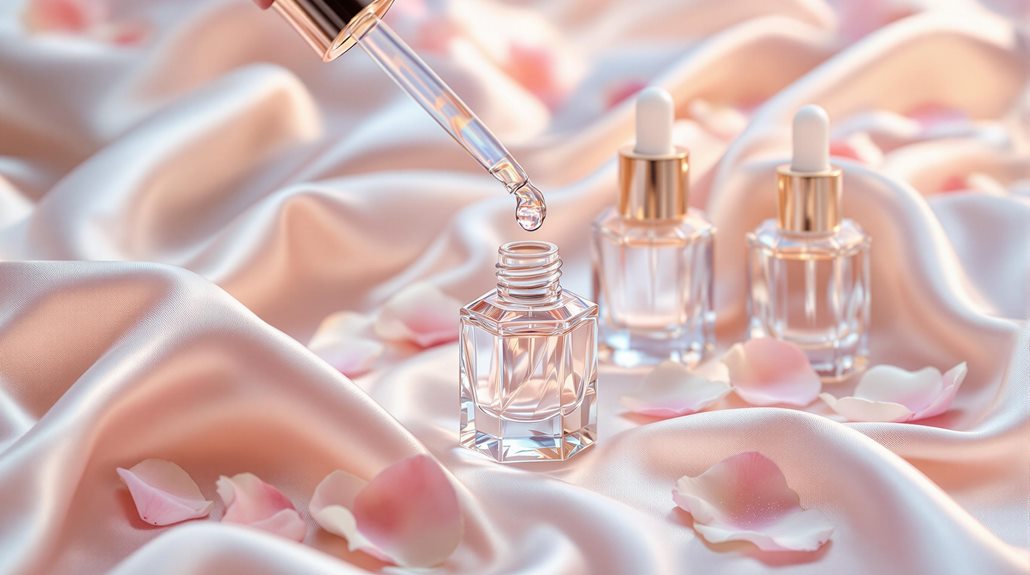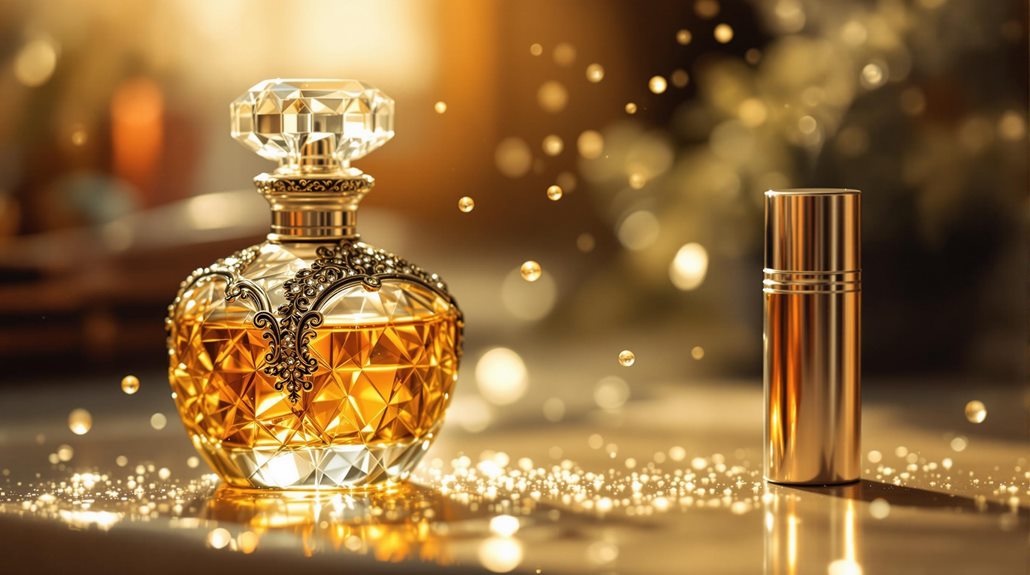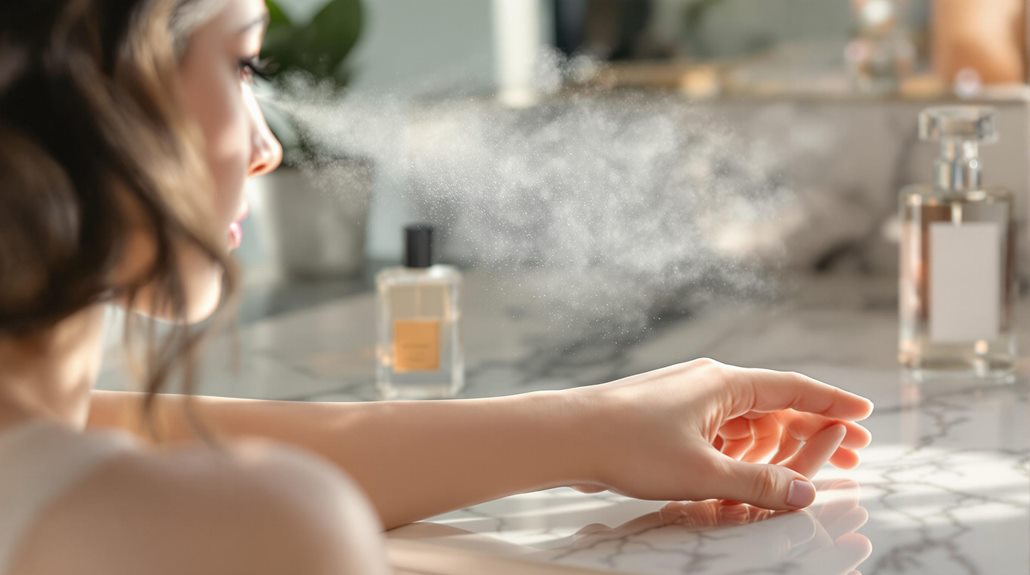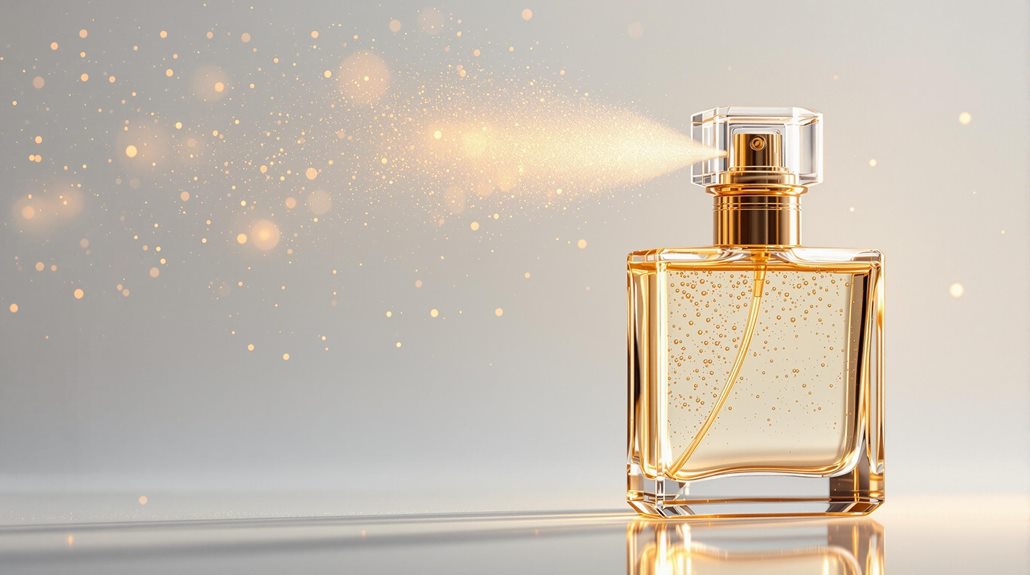Why Do Girls Put Perfume on Their Ankles? Surprising Fragrance Tips
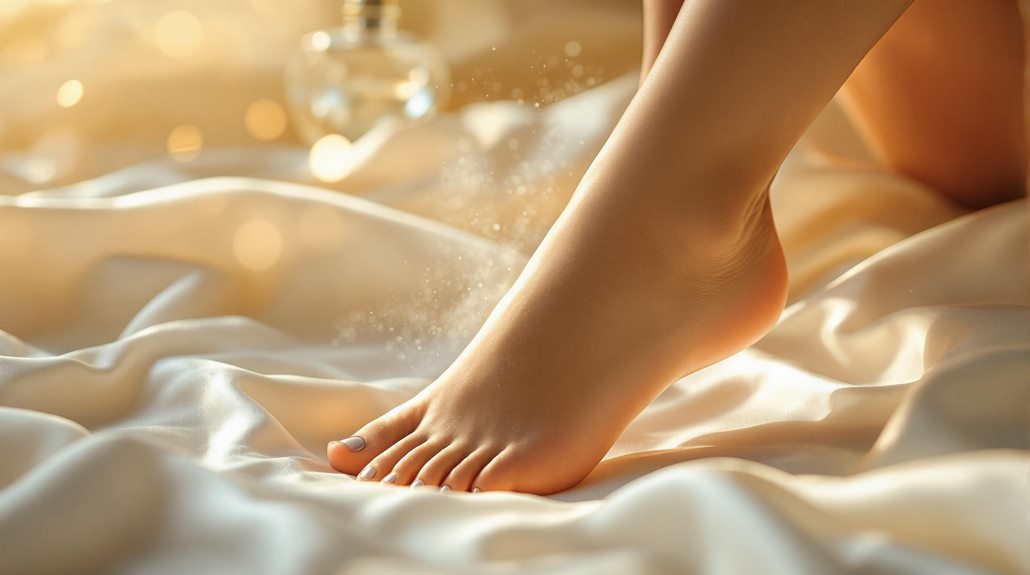
You'll find the practice of applying perfume to ankles traces back to the sophisticated 1920s, when fashionable women uncovered this clever fragrance trick. It's all about strategic placement - your ankles contain pulse points where blood vessels run close to the skin's surface, creating natural warmth that helps diffuse the scent upward throughout the day. As you walk, your movement creates a subtle trail of fragrance that rises around you. While modern perfume techniques have evolved, this traditional method still holds its charm. There's much more to the art of perfume placement than meets the eye.
The History Behind Ankle Perfuming
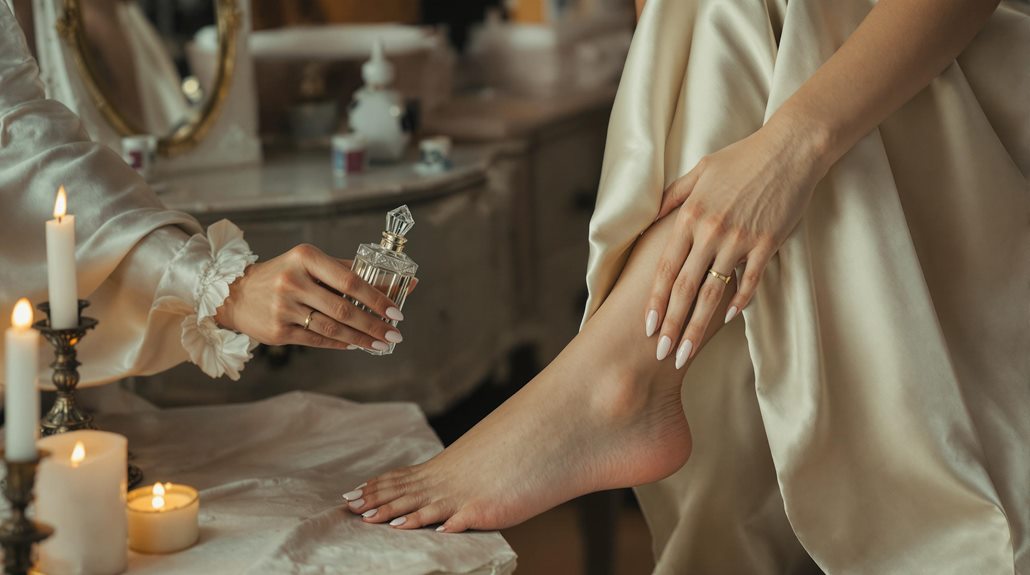
Many fashionable women in the 1920s and 1930s adopted an intriguing perfuming technique that's largely forgotten today - applying fragrance to their ankles. The reason behind this practice was both scientific and seductive. Your ankle area contains pulse points, which emit heat and help diffuse the scent upward, creating an alluring fragrance trail.
It's important to note that this technique wasn't just a random trend - it was championed by some of the world's oldest luxury fashion houses. The legendary Coco Chanel herself advised women to apply perfume wherever they wished to be kissed, including the ankles, adding a touch of sensuality to this practical application method.
The strategic placement of perfume behind the knees and at the ankles helped the scent last longer throughout the day. As you moved, the fragrance would create a subtle "cloud" effect around you, making your presence known without overwhelming those nearby. This sophisticated approach to perfume application became a hallmark of high society, combining both functionality and allure in a way that defined an era of elegance.
Pulse Points and Fragrance Projection
The strategic placement of perfume on pulse points remains a time-tested technique that extends far beyond the ankle-perfuming practices of the 1920s. When you apply perfume to pulse points, you're taking advantage of your body's natural heat to enhance the fragrance's diffusion and longevity. These warm spots act as natural scent diffusers, creating a sophisticated trail of fragrance that moves with you throughout the day.
Your body's pulse points serve as ideal locations for perfume application because they're naturally warmer than other areas of your skin. This heat helps activate and project the fragrance molecules upward, creating what perfume enthusiasts call a "scent cloud."
- Wrists and inner elbows for immediate scent projection
- Behind the ears and neck for an intimate fragrance experience
- Behind the knees for upward scent diffusion while walking
- Ankles for a rising fragrance effect that envelops you
Science of Scent Diffusion
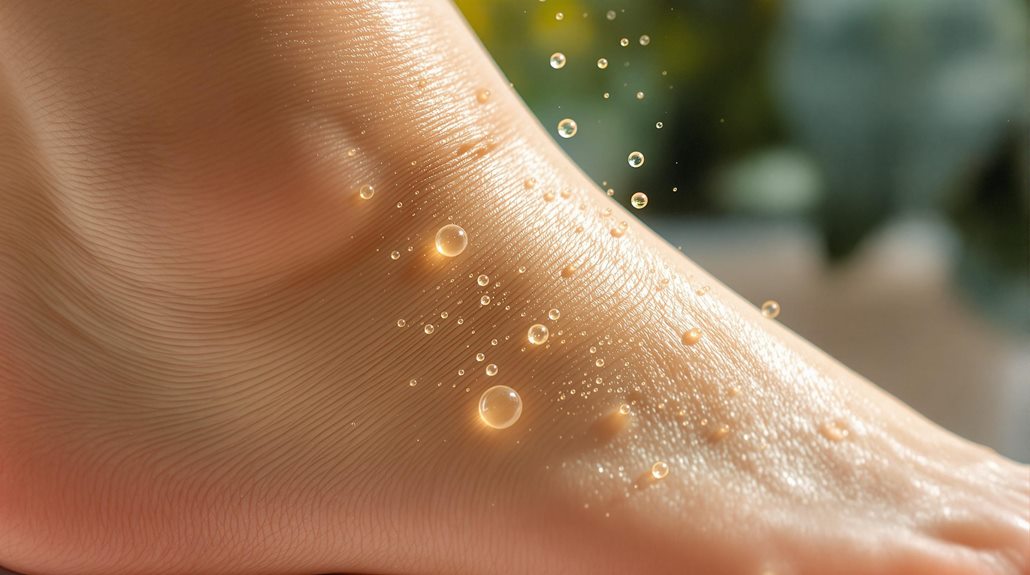
Understanding how scent molecules travel through the air reveals why pulse point application works so effectively. When you apply perfume to areas like your ankles, you're actually taking advantage of your body's natural heat distribution system. The blood flowing through your pulse points creates warmth that helps vaporize the fragrance molecules, allowing them to disperse more efficiently into the surrounding air.
The science behind this technique relies on the relationship between heat and molecular movement. Your posterior tibial and popliteal pulses, located behind the ankle and knee respectively, serve as natural diffusion points. As your body heat activates these areas, the fragrance molecules become more volatile, creating an upward path of scent that follows your body's natural thermal currents.
This strategic placement guarantees better absorption into your skin while maximizing the perfume's projection. The concentrated blood flow in these pulse points acts like a natural heating element, continuously warming the fragrance throughout the day. By targeting these specific areas, you're not just randomly applying perfume - you're using your body's own temperature regulation system to enhance and prolong the scent's presence.
Traditional Application Methods
The logic behind these traditional methods centered on pulse points and movement. When perfume was used on the lower body, particularly the ankles, body heat helped diffuse the fragrance upward, creating a refined scent trail. This technique, popularized in the 1920s and 1930s, remained influential through the 1950s when women would also perfume their hemlines for an enchanting "cloud" effect.
- Ankles were targeted as key pulse points where the scent could warm and rise
- Behind the knees was chosen to release fragrance when walking
- Hemlines were scented to create a subtle trail of perfume
- Multiple application points were used to layer the fragrance experience
This methodical approach to fragrance application reflected Coco Chanel's famous advice about applying perfume where you want to be kissed.
Modern Perfume Wearing Techniques
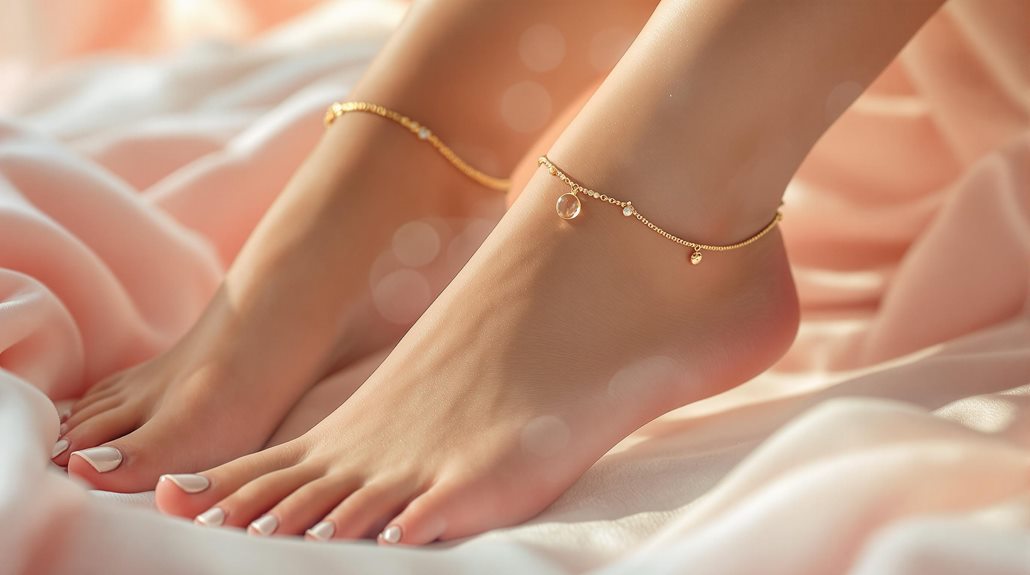
While traditional fragrance application methods offer timeless wisdom, contemporary perfume wearing has evolved to favor convenience and efficiency. Today's most popular technique focuses on pulse points - areas where blood vessels are closest to the skin's surface. You'll find these strategic spots on your wrists, neck, and behind your ears, making them ideal locations for maximizing your perfume's projection.
If you're looking to experiment with different scents and their lasting power, don't overlook less conventional spots. Your ankles, though not commonly considered, contain pulse points that can effectively diffuse fragrance throughout the day. Some women choose to apply perfume along their hemline or behind their knees, creating a stylish scent trail that follows their movement.
Modern application techniques prioritize accessibility and comfort while maintaining the fragrance's impact. You can adjust your application based on your personal preferences and the intensity you desire. Whether you're heading to work or a special event, these contemporary methods let you control how your scent projects while ensuring it stays with you throughout your activities.
Benefits of Ankle Application
Perfume lovers often overlook one of the most effective fragrance application spots - your ankles. This traditional application method offers unique advantages that can enhance your scent experience throughout the day. When you apply perfume to your ankles, the fragrance naturally disperses upward as you move, creating an enchanting cloud of scent that surrounds you.
Your ankle's pulse points serve a pivotal role in this process, as they generate body heat that helps the fragrance molecules better penetrate your skin and extend the perfume's longevity. While this technique might seem unconventional by today's standards, it's rooted in historical practices that recognized the ankle's potential for optimal scent projection.
- Creates a natural, rising scent trail that envelops you
- Employs pulse points to enhance fragrance absorption
- Provides longer-lasting wear due to better skin penetration
- Allows the scent to gradually unfold as you walk
This strategic placement modifies your daily movements into opportunities for subtle yet effective fragrance diffusion, making your perfume work harder for you throughout the day.
Cultural Significance Through Time

Throughout history, fragrance application rituals have reflected society's changing views on status, seduction, and social propriety. The practice of applying perfume to ankles and knees became particularly prominent among high society, where it served as both a status symbol and a sophisticated approach to fragrance diffusion.
In the 1950s, you'd find women strategically placing perfume along their hemlines and behind their knees, creating what was known as a "cloud effect" as they moved through space. This technique wasn't just about smelling pleasant—it made a statement about one's social standing and attention to detail. Coco Chanel's famous advice about applying perfume where you want to be kissed added an element of allure to these practices, though it's worth noting that society often judged women harshly for wearing too much fragrance.
The historical significance of perfuming intimate areas carried complex social implications, balancing between sophistication and sensuality. What began as a marker of refinement in upper-class circles evolved into a broader cultural practice that reflected the delicate interplay between social acceptability and personal expression.
Choosing the Right Fragrance
Finding your perfect fragrance isn't just about following trends or picking what's popular - it's about understanding your preferences and lifestyle needs. Your personal preference in scents plays an imperative role in selecting a fragrance that truly represents you. When choosing a signature scent, it's vital to ponder how the fragrance evolves on your skin and how long it lasts throughout the day.
To make an informed choice that aligns with your personal preference, follow these key steps:
- Sample different fragrance families (floral, woody, oriental, citrus) to identify which category resonates most with your taste
- Test fragrances directly on your skin, as body chemistry can significantly transform how a scent develops
- Contemplate the occasions where you'll wear the fragrance - lighter concentrations for daytime, stronger ones for evening
- Pay attention to longevity and sillage (scent trail) during wear tests
Remember to take your time when selecting a fragrance, as it becomes an extension of your personality. Don't rush the process - investigate various scent combinations and concentrations until you find one that makes you feel confident and comfortable throughout the day.
Common Application Mistakes
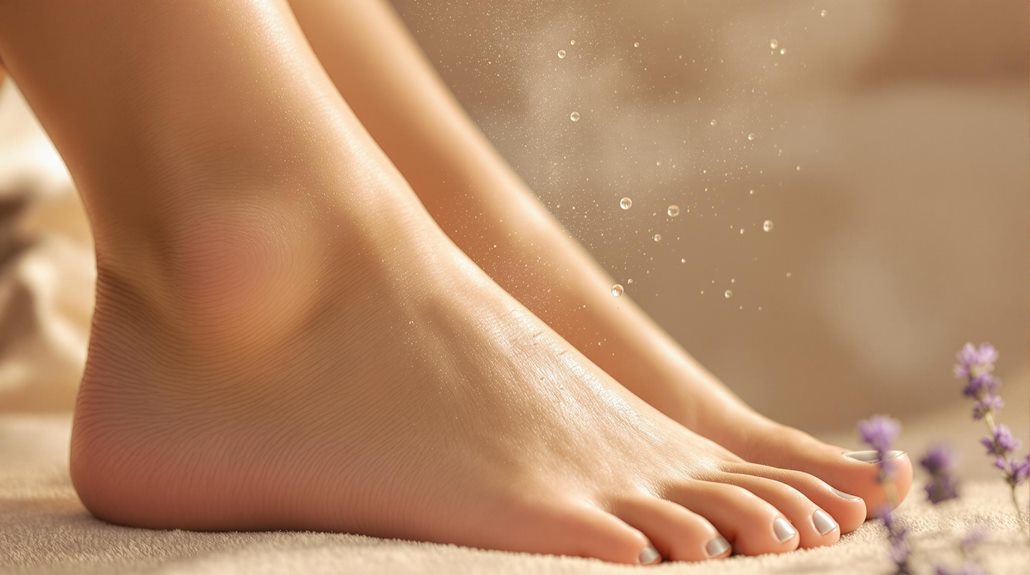
When it comes to fragrance application, even seasoned perfume enthusiasts can make mistakes that diminish their scent's impact. One common misconception is applying perfume on their ankles, a practice that can actually work against your fragrance goals. While this traditional method might seem appealing, it often results in an overwhelming scent cloud that rises throughout the day.
You'll get better results by focusing on your pulse points, particularly your wrists and neck, where your body heat naturally helps diffuse the fragrance. When you spray perfume directly on your ankles, you're subjecting the scent to constant friction from walking and movement, causing it to fade more quickly than intended. Additionally, your ankles aren't typically exposed, making it harder for the fragrance to project effectively.
To maximize your perfume's performance, consider your lifestyle, the occasion, and the specific characteristics of your chosen scent. Instead of following outdated application methods, adapt your technique to suit your needs. Remember that less is often more - you don't need to apply perfume everywhere to achieve a lasting impression. Focus on strategic placement that works with your body's natural warmth and movement patterns.
Expert Perfume Tips
Professional perfumers rely on three essential techniques to maximize fragrance performance. They understand that strategic placement, temperature sensitivity, and layering all play vital roles in how a scent projects throughout the day. While the traditional practice of applying perfume to the ankles stems from historical fashion preferences, modern experts have refined these techniques for contemporary use.
Target pulse points where blood vessels are closest to the skin's surface, including wrists, neck, and chest
Apply fragrance immediately after showering when your skin is still warm and pores are open
Layer matching scented products like lotions and oils to create depth and longevity
Consider your daily activities and clothing choices when selecting application points
While ankle application isn't entirely obsolete, today's perfume experts recommend focusing on upper body pulse points for ideal projection. The key is understanding how your body chemistry and daily routine interact with the fragrance. By adapting these professional techniques to your lifestyle, you'll achieve better scent performance and longevity throughout the day.
Conclusion
You've learned the art and science behind ankle perfuming - from its historical roots to modern application techniques. Whether you're dabbing fragrance on pulse points or experimenting with layering, remember that personal scent is an intimate form of self-expression. Armed with these expert tips, you'll make the most of your favorite fragrances and avoid common mistakes. Now you're ready to create your own signature scent story.

